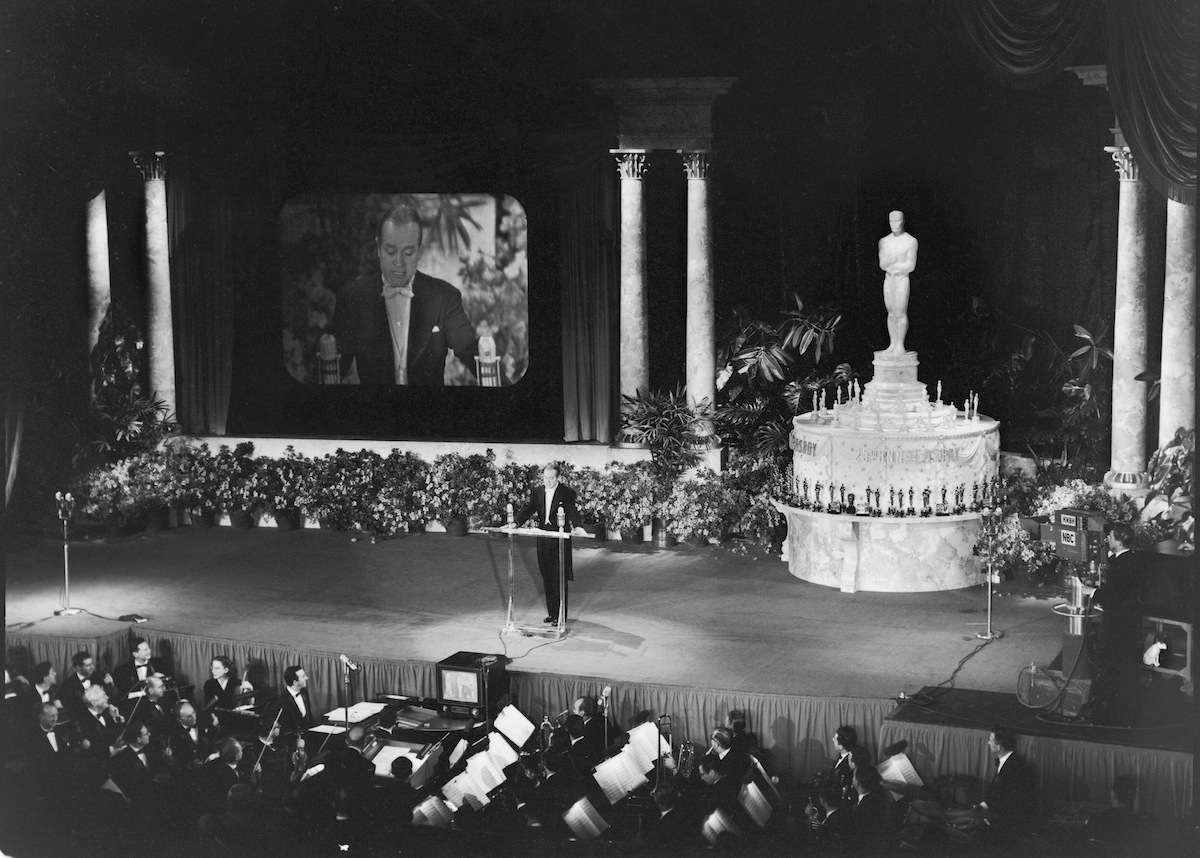
It was, as TIME put it in 1953, a bit of a shotgun wedding: old-time Hollywood and his “child bride” television, as Bob Hope phrased it, had already effectively gotten together, and it was too late to go back. They made it official that year by introducing TV viewers to the Oscars, with the first-ever broadcast of the annual Hollywood ceremony.
The budget for the telecast of the 25th Academy Awards was a quarter of a million dollars, and veteran host Hope was chosen to MC the night from Los Angeles. And it was clear from the beginning that television would change things for the Academy Awards:
To the movie fans outside Hollywood’s RKO Pantages Theater, the show looked familiar: klieg lights crisscrossing the wet night sky and Cadillacs disgorging jeweled and ermined cargoes. But inside the palace, surrounded by TV cameras, zoomar lenses, floodlights and monitoring screens, the 2,800 top-drawer movie folk were acutely conscious that times had changed.
For the first time, some 34 million televiewers got a look at Hollywood’s most ballyhooed annual event. The TV technicians, bossing the whole show, did a slick job of switching back & forth between Hollywood and Manhattan’s International Theater, where a junior edition of the ceremonies was under way. All the cinema queens, some appearing for the first time on TV, looked as gorgeous as they ever did, but a few seemed to miss the careful direction they get in films. The cameras might have been less rigid (the losers in the audience were ignored, even though Bob Hope had advised watching them: “You’ll see great understanding, great sportsmanship—great acting”). But the show was still fascinating in an unrehearsed, star-studded way.
That first year, the presence of the cameras was perhaps the most notable effect of the televising of the Oscars. After all, movie fans had already been able to listen in on the radio, so the Oscars weren’t entirely new to them. Plus, TV didn’t get much respect at the time. Hope joked in his opening monologue that television was “where movies go when they die” and that some in Hollywood were reluctant to acknowledge it as a medium:
By the second year, about 40 million people tuned in — that’s not so far from the number for 2014 — and TIME commented that advertising to them was distracting from the actual ceremony. Already by 1957, the magazine complained that, “Any glamour that was left was promptly rubbed out by the split-second demands of television, which turned the parade of winners into a supermarket mob scene.” In just a few years, the small screen had pulled a Sunset Blvd.: the stars were still the same people, but they’d quickly gone from distant and magical to sadly normal, with a brief via “fascinating in an unrehearsed…way.” In the era of Seth MacFarlane regaling the at-home audience with a song about the anatomy of the industry’s most famous actresses, it’s clear that the progression away from that glamor didn’t stop.
The best picture award in 1953 went to The Greatest Show on Earth but the ceremony also introduced a new contender for “greatest show”: the broadcast was, according to the Academy, the most-watched show in commercial television history so far, and its effects are still being felt.
Read the full article from 1953 here, in the TIME Vault: The Oscars
More Must-Reads from TIME
- Donald Trump Is TIME's 2024 Person of the Year
- Why We Chose Trump as Person of the Year
- Is Intermittent Fasting Good or Bad for You?
- The 100 Must-Read Books of 2024
- The 20 Best Christmas TV Episodes
- Column: If Optimism Feels Ridiculous Now, Try Hope
- The Future of Climate Action Is Trade Policy
- Merle Bombardieri Is Helping People Make the Baby Decision
Write to Lily Rothman at lily.rothman@time.com